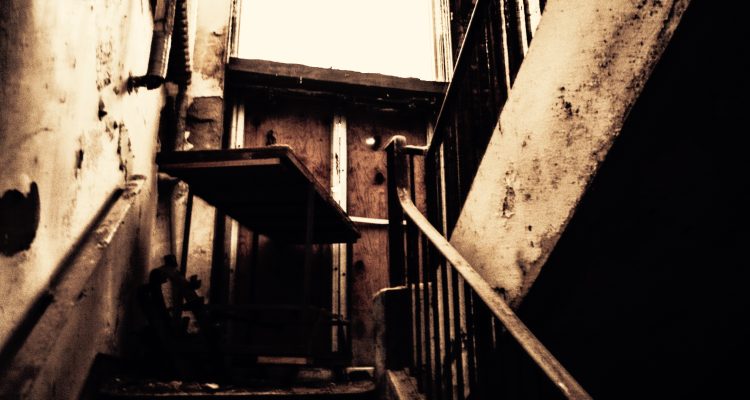It closed 43 years ago, and it has sat here empty ever since.
It was a popular dare back in the day to go there, and this destination always delivered whatever demons your mind feared the most. This is where death occurred over and over, and I was going back into this former hospital for the first time since venturing in as a beer-drinking college student.
There was one window that was completely destroyed by vandals, and I, along with the other two brave beings with me, knew we would be able to fit through. I climbed up a ladder to gain access, and I’ll admit right now it wasn’t the first time I did such a thing to visit what haunts this hilltop. This time was on the up-and-up, though, since I was accompanied by sober adults in broad daylight instead of drunken kids in the middle of the night.
Ohio County Commissioner Orphy Klempa scaled first; it was his ladder, after all. He had visited the property before, but he had never been inside the former asylum. I asked him about this venture several months ago, and as usual Commissioner Klempa came through.
Olivia Littman was next to climb. Her family moved into the nurse’s quarters when she was in second grade (1987), and they moved away after her ninth-grade year in May 1994. Her father was charged with caring for the grounds post-closure, and those duties often involved chasing trespassers away.
Littman had not been inside since she moved away 21 years ago.
And then up I went without knowing what to expect or what I would recall from the excursions I had taken in the past. My parents never knew I drove their vehicles along this path, but I did during high school and college seeking something of what the legends contained. It was said to be haunted with lunatics, and those spirits were most often referred to as hostile. Some visitors have insisted they were scratched by something, and others demand they were at least touched, too. I was dripped on by the ever-present moisture seething through this relic, but not tickled by a haunt in any way. Unfortunately.
This is “Roney’s Point,” a legendary destination that involves mystery, confusion, and urban myths that were finally set straight on Nov. 22, 2014, here on Weelunk. The Schmulbach Mansion, the first structure seen to the right as you make your way to this former hospital from U.S. 40, never did serve as refuge for those suffering from tuberculosis or mental illness. And the actual facility was shuttered not because of allegations of sexual assault but because the building had fallen into disrepair by the time the state of West Virginia decided to close it and hand the property over to the Ohio County Commission.
Opened in September 1936, according to records found at the Ohio County Public Library and furnished by the “TB Association of Ohio County,” this two-floor, 40-bed facility was constructed to house the area’s tuberculosis patients. Once the plague was rendered under control in the late 1940s, another epidemic was confronted on this Roney’s Point hilltop, and that was mental illness. Throughout the history of the United States the practice of ostracizing the mentally ill was the most popular way to deal with such ailments socially. The families were embarrassed, the sufferers were misunderstood, and the ill were dispatched to facilities such as the asylum in Ohio County to undergo treatments that involved electricity and the brain’s frontal lobes.
According to the website maintained by the TB Association:
“In September of 1936, a 40-bed sanatorium was opened on the county farm location. The cost of the institution was $188,000. It was financed in part by the Anti-Tuberculosis League, Federal WPA, and funds provided by the county. In October of 1942, a fund was started by Mrs. J. D. Merriman in memory of her husband to build a Nurses’ Residence at the Roney’s Point Sanitarium. The league added $3,010.00 to the project in February 1943, but the project was abandoned in November 1943 due to insufficient funds.
From September 1944 to June 1945 the League supplemented the salaries of persons working at the sanitarium. The supplement was 10 percent of their monthly salaries. If the League had not done this, the sanitarium would have closed, as the county did not have the money to give pay raises. The league also subsidized the cost of patients staying at the sanitarium until 1948.
Over the years the League bought and maintained equipment and provided supplies for the sanitarium. Clothing for the patients was provided, and milk was purchased to be delivered to the homes of persons suffering from Tuberculosis to help prevent their children from contracting the disease.”
(http://www.tboc.org/history2.html)
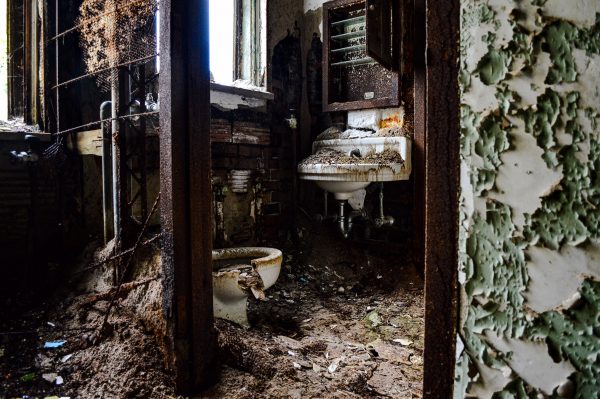
“That’s how we treated people with mental illness back in those days; we locked them away,” said Klempa. “In some respects, we still do the same today, but it wasn’t just here. It was countrywide when it came to both tuberculosis and mental illness. This place housed nothing but those people when it was in operation because no one at the time knew any better.
“When I was growing up in Bellaire we always heard about the legends about this place. We heard about the death, and we heard about the crazy people taking over,” he said. “It never made much sense, but it was Roney’s Point, and there’s always been a lot of stories about it.”
Tuberculosis patients cough a lot, and that was a big problem because they were far too contagious. After a week of the ever-annoying hacking, these patients usually coughed up blood. A lot of it! They knew at that very moment they had inhaled another person’s infected spray from a cough or sneeze and that they would have to go away never to see their families again. There was no cure. Inevitably, they were soon to meet the Grim Reaper.

That was the reality across America in the early 1900s, when hundreds of thousands of Americans died from tuberculosis. It’s a respiratory illness that no one expected, one that still exists today, and the decision made by lawmakers in most states at the time was to lock the sick away. In Ohio County, the answer initially was the Viewpoint Sanitarium on Stone Church Road, and very soon after an individual was diagnosed with the death sentence that was tuberculosis, he or she was quickly dispatched to the institution to undergo, “breathing therapy.” The need for a larger facility was great, and that is why the county farm property was selected as the site for construction of a much larger hospital.
The front porch area is grown over now, most of the doorways and windows have been boarded up to restrict access, and the interior is in far worse condition today. So much so, Littman left her homecoming disappointed with what she saw this past Wednesday.
“I used to ride my bike through the hallways, but there’s no way anyone could now,” she said. “Who knows who really did this, but it was difficult to even walk through because of all the garbage that’s been thrown in here.
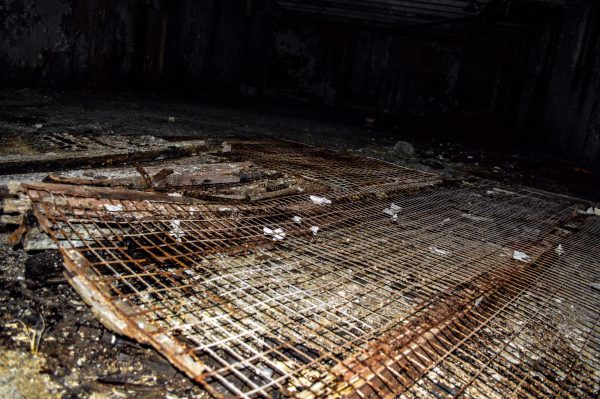
“It brought back a lot of memories for me, it really did, but it was a lot different than what I remember because of what the years have done to the building and because of what the vandals have done,” Littman continued. “I know it wasn’t a good place for anyone who was hospitalized here, but for a lot of reasons it was for me.”
My first steps were on a floor covered with plaster and moss growing thanks to drips leaking from a desperate roof, and immediately I saw remnants of what had to be discarded inside the building post-closure instead of hauled to a proper garbage dump. Glass, old books, bottles and cans, stuffed animals, wrestling trophies, laundry baskets, old mattresses, and even a bowling ball, littered most of our carefully taken walking tour. Despite the debris, though, Littman shared her knowledge as to what was what and where this was and where that was. The day rooms, the “breathing areas,” and the “blue-room” and “red-room” cages in the basement were clear recollections.
Those cages, though, were no longer in place. Vandals have completely destroyed the cells that used to contain the patients for whom “confinement” was prescribed, and the criminals left the steel remnants flat on the basement floor. The larger rooms of the hospital located on the east and west ends of the building, once utilized as community bedding areas, are now cluttered with discarded junk. In the basement are a pile of tires, broken toilets, smashed drywall, and litter scattered about.
She possesses a vivid memory of scattered blood on a door in one of the operating rooms, and while proof still remains of the claim, it’s been spray painted on since by someone unhappy with someone named Melissa.
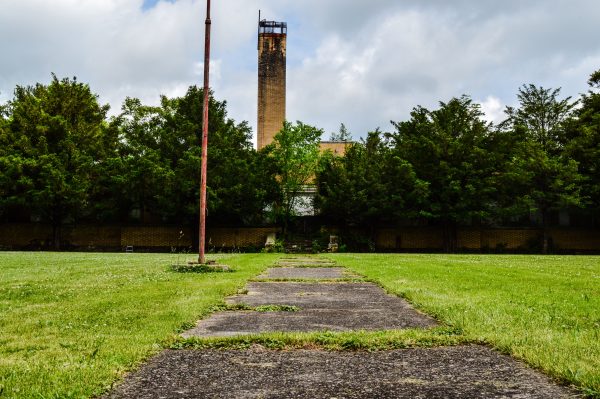
Litmann was angry.
“When we lived up here, this building was still clean the way the state and county left it. It was just sitting there as a perfectly good, empty building that we played in,” she said. “But now, this needs to go. I wouldn’t have come here today if it wasn’t with you and Orphy.
“I don’t regret coming here, but what people have done to this place is disgusting. It’s no longer a cool, old building with a lot of history to it,” she said. “After seeing it today, this is history that will never be able to be rediscovered beyond this. The years of decay and how people have treated since it closed has killed any chance. That’s why I’m glad I got to walk through now before it goes away.”
Klempa, a carpenter by trade, noted the heating and water systems in the basement of the building as we navigated the dreary darkness, and we also examined the old elevator, the boiler room, the kitchen, and the operating suite that likely doubled as the morgue.
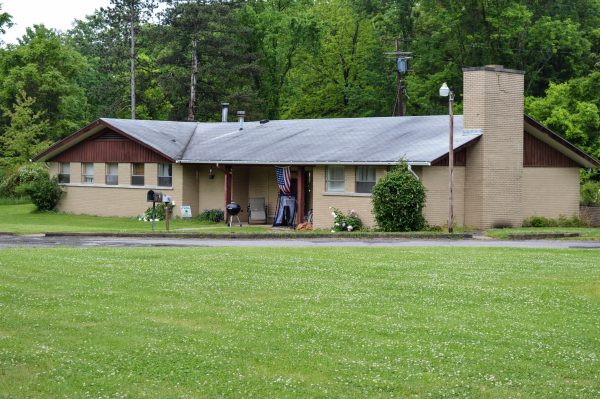
“We all had our haunted houses and places that were pretty scary, and Roney’s Point was one of those places while I was growing up here in the valley,” Klempa recalled. “This is one of those places where your imagination runs wild, and that’s why there are so many rumors about this entire area.
“All of the real facts about what really took place in this facility will never be known for sure because of the time that has passed since it closed, so that’s where all the stories come into play,” he said. “What we do know is that it was a hospital that first treated patients with tuberculosis and the mentally ill. And we know they were sent here because the majority of people were scared and didn’t know what else to do.”
The future of the building is in question, Klempa reported, because of its condition and the persistence of lawbreakers who continue flowing up and down County Farm Road despite the fact that a West Virginia State Trooper now resides in Littman’s former home.
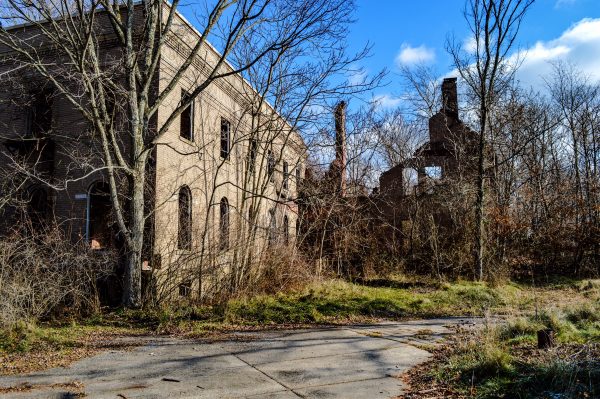
“It’s a beautiful setting, sure, but it’s a very dangerous place, and no one should be fooling around up here because you can easily get hurt. I believe that more now than ever before because now I have seen it for myself,” Klempa said. “The other commissioners and I would love to have the money right now to tear the facility down, but it would be very expensive because of how well-built it is.
“It’s solid concrete, and those things don’t fall down easily, and there is a lot of asbestos in there, so it would need to be remediated before being demolished, and that’s an expensive process, too,” he continued. “Bringing the buildings down on all of the property (including what structures remain on the former Schmulbach acreage) is definitely something we have discussed, and I think it will happen at some point in time.”
Currently Southwestern Energy maintains a Marcellus horizontal natural gas well pad on the property, and there exists no timetable, Klempa said, for the sanitarium’s destruction. If a commercial development agreement were signed, however, the process would be expedited.
“We would love to find some way to develop the county farm property, especially since there are more than 300 acres up there,” Klempa said. “We’re open, and we’ll listen to anyone’s proposal, but the problem with the property is access. If it was sitting along Interstate 70 like The Highlands does, it would be a different story.
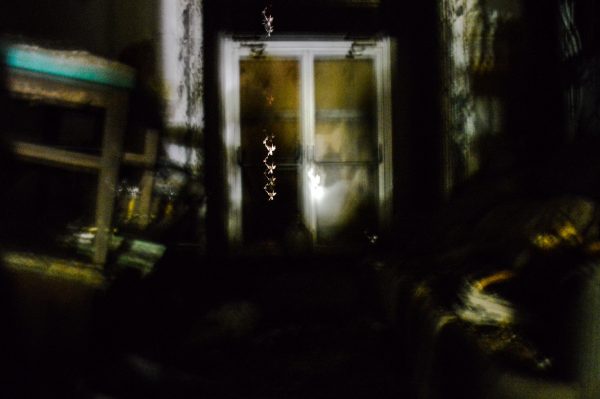
“We’ve not discussed residential development up here as much as we’ve discussed some kind of commercial development,” he said. “Will it happen? I have no idea if it will, but the potential is there for it to happen.”
The Trans-Allegheny Lunatic Asylum is the state’s most notorious former facility that treated the mentally ill in Weston, W.Va. Constructed in 1864 to treat 250 patients, the hospital housed as many as 2,400 people in 1949. An investigation conducted that same year by journalists employed by the Charleston Gazette revealed that patients were locked in cages, lobotomies were performed with “rudimentary instruments,” and the building’s condition was described as, “gross.”
Much the same is said to have happened at Roney’s Point, but that’s not the only reason why Littman insists that spirits remain inside.

“I had way too many experiences myself not to believe that there are unhappy souls who are still here on this property,” she said. “But the years we lived up here were very happy years in my life. We had a lot of fun up here, and my family had a lot of gathers and picnics up here.
“The yard in the front was our play area, and we used the barbecue pit, and my dad would take friends and family on tours of the building all of the time,” she continued. “But like I told you before, I slept with a big stick, and I did that because of what I heard, what I saw, and what I felt.
“I have no clue what stories are true and what stories are false, and trust me I’ve probably heard them all. Once someone finds out I lived up here when I was a kid, they always tell me what they think they know and about the parties they went to up here. And trust me, there were a lot of parties my dad had to break up,” Littman added. “But it’s haunted up here. I know it is.”
Please view the entire photo gallery here:
[satellite gallery=13](Photography by Steve Novotney)


